Mobility is more than just moving from one place to another. It’s about how you move, how smooth it feels, how much energy it takes, and how confident you are in every step. For people using lower limb prosthetics, the type of foot you choose plays a huge role in how your body moves and feels—day after day.
Two of the most talked-about options today are dynamic response feet and traditional prosthetic feet. Each one has its own strengths, and each suits different needs. But how do you know which one is right for you? What does “better mobility” actually mean in everyday life?
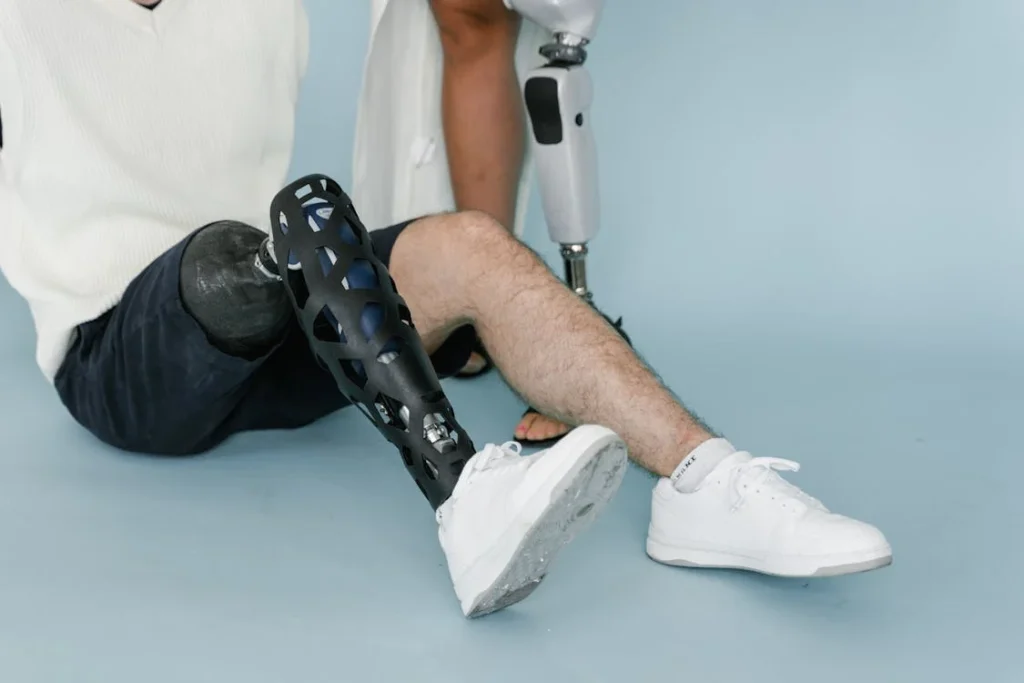
Understanding the Basics: What Sets These Feet Apart?
What Is a Traditional Prosthetic Foot?
Traditional prosthetic feet have been around for a long time. They are built to provide basic support for walking, standing, and daily activities. Most of these feet are made from solid materials, like wood or rubber, sometimes with a simple metal core.
They don’t move much and have very limited flexibility. You can think of them as stable and firm. They’re designed to hold your weight and help you stay upright—but they don’t give much feedback or help with motion.
For many people, especially those who move at a slower pace or don’t walk long distances, these feet are dependable. They offer good balance and require less fine-tuning.
Some users find comfort in their simplicity. But if you want to walk faster, take on uneven terrain, or feel a bit more spring in your step, they may not give you that extra push.
What Makes a Foot “Dynamic”?
A dynamic response foot is a newer type of prosthetic design. It’s built with energy return in mind. That means it stores energy when your heel strikes the ground and then releases it as you push off with your toe.
It feels more like how a natural foot works. These feet are usually made with carbon fiber or other lightweight, flexible materials that bend and bounce back with each step.
This kind of movement can reduce the amount of energy your body needs to walk. Instead of dragging the foot or stomping, your steps can feel smoother, lighter, and more natural.
For people who walk a lot, run, or move quickly, this type of foot often offers better comfort and support over time.
Dynamic feet are not one-size-fits-all, though. They require a bit more attention to fit and alignment. They also respond differently depending on your weight, walking speed, and activity level.
But when matched properly, they can give a feeling of freedom that’s hard to find with a traditional foot.
The Role of Movement and Feedback
One of the biggest differences between these two foot types is how much feedback they give to the rest of your body. Traditional feet don’t offer much information.
You might not feel the ground beneath you clearly. This can make it harder to react when the surface changes—like stepping onto gravel or walking across a slope.
Dynamic response feet, on the other hand, tend to mimic some of the sensations of a natural foot. They respond when you move.
They flex when you lean. And that response tells your brain and body more about where you are and how to adjust your balance. That doesn’t mean they feel exactly like a real foot—but they come closer, and that often makes walking feel more stable and secure.
The more in tune you are with your prosthetic foot, the easier it becomes to trust each step. And that trust can boost confidence, especially when walking in public, on busy streets, or on unfamiliar paths.
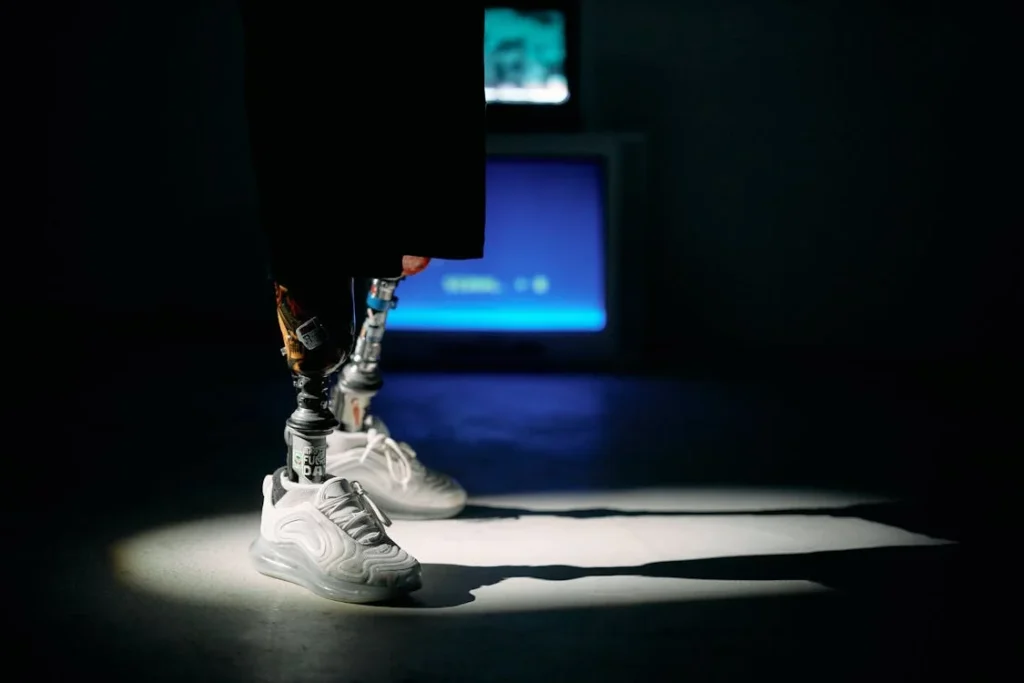
How Each Foot Type Affects Your Mobility in Real Life
Walking Indoors and on Smooth Surfaces
When you’re inside your home, at work, or walking through a store, the floor is usually flat and predictable. On these kinds of surfaces, both traditional and dynamic feet can help you get around. But how they do it—and how your body feels while moving—can be quite different.
With a traditional foot, every step feels more deliberate. There’s less movement in the ankle, and each footfall might sound or feel a little heavier.
That’s not necessarily a bad thing—it can give you a strong sense of grounding. But it often means you need to lift your knee higher or swing your leg more to keep up a steady pace.
With a dynamic response foot, the step is more fluid. The foot bends slightly as you step down and gives a little push as you roll forward. This helps you use less energy, especially if you walk a lot.
You might find that walking around the house or at work becomes more comfortable over time because you’re not fighting your own steps.
Going Outdoors and Dealing with Uneven Ground
Once you step outside, the ground gets unpredictable. Sidewalk cracks, grassy patches, ramps, and slopes all ask more from your prosthetic. And this is where the difference between the two feet becomes more noticeable.
Traditional feet are stiffer, so they don’t always handle uneven ground well. You may have to slow down, adjust your posture, or watch every step closely.
This can increase the mental and physical energy you need to walk safely. The foot doesn’t adjust to the surface—you have to.
Dynamic response feet are better at adapting. Their flexible design helps absorb shock from the ground and adjust slightly when the terrain shifts.
That means you don’t have to work as hard to stay balanced. Your movements feel more natural, and you can focus less on every step and more on where you’re going.
This added adaptability helps reduce the risk of falls and makes outdoor walks feel less tiring. It also opens the door to more physical activity—like hiking, walking pets, or simply exploring new places—because you’re not held back by your foot’s limitations.
Speed, Balance, and Turning
Speed isn’t always about going fast. It’s also about being able to change your pace easily when needed. Whether you’re hurrying across the street or slowing down for a conversation, your foot should help you keep up—not hold you back.
Traditional feet can make sudden changes in speed feel awkward. Because they’re not designed to store and return energy, each shift in pace has to come from your body. Turning corners or navigating tight spaces might feel stiff or clunky.
Dynamic feet offer more flow. Their ability to flex and return energy helps you adjust pace with less effort. Turning becomes smoother.
Your gait can stay more consistent, even when you change direction quickly. This makes dynamic feet feel more “in sync” with your movement.
Balance is another area where dynamic feet tend to shine. By allowing more ankle motion and better ground response, they give your body more information. That helps your brain make tiny corrections as you walk, reducing the chances of tripping or stumbling.
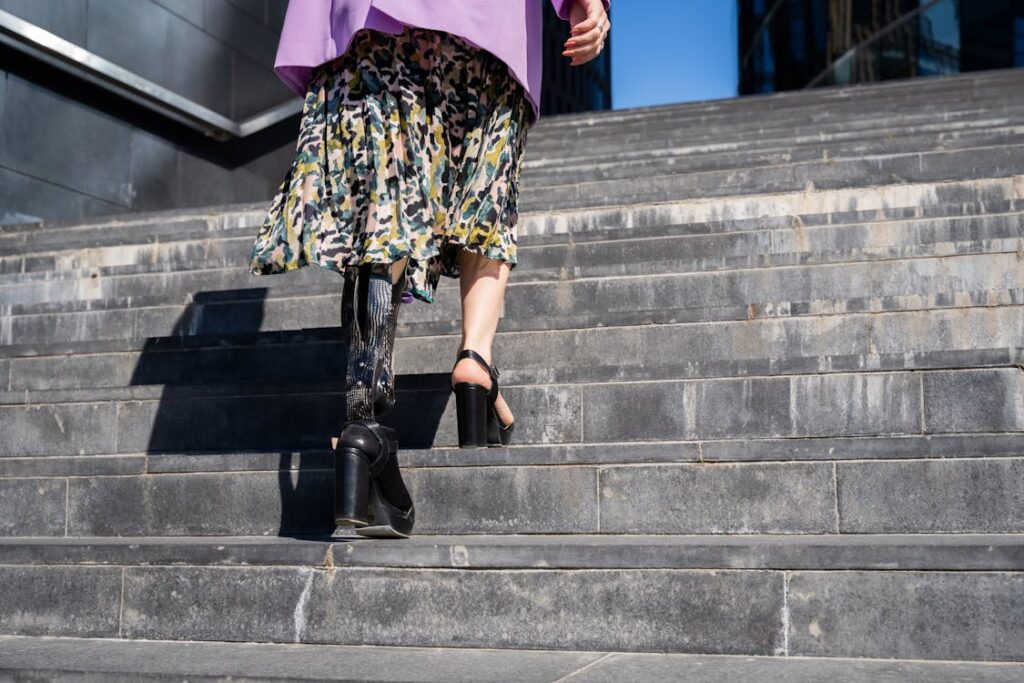
Energy, Comfort, and Long-Term Wear
How Much Energy Does It Take to Walk?
Every step you take with a prosthetic uses energy. The question is—how much? The more energy it takes, the faster you get tired. And when you’re tired, your posture shifts, your form breaks down, and pain can creep in.
So, the type of prosthetic foot you use doesn’t just affect how you walk—it affects how long and how comfortably you can move.
Traditional feet don’t return much energy. They give support, but they don’t give anything back. When your heel strikes the ground, the foot stays mostly still.
You’re doing all the pushing with your muscles. Over time, that gets exhausting, especially if you walk long distances or stand for long hours.
Dynamic response feet help in a different way. When you take a step, the foot bends and holds some of that force.
As you push off, it gives some of that energy back, helping to propel you forward. It’s not like walking on springs, but it’s enough to reduce the load on your muscles and joints.
Many users describe this as feeling “lighter” or “smoother.” Over a day, that small difference adds up to less fatigue, fewer aches, and more energy left for everything else you want to do.
Comfort Over Time
When it comes to comfort, it’s not just about how the foot feels in the first five minutes. It’s about how your body feels after hours of use, day after day. This includes your residual limb, your back, your hips, and even your shoulders.
Traditional feet are predictable. For people who value a solid, firm base, that can be comforting. But the lack of movement means your joints have to work harder to adjust to different angles or changes in ground level. Over time, this can lead to overuse pain in the knees, hips, or lower back.
Dynamic feet are gentler on the body in motion. The built-in flexibility allows the foot to adjust as you step, taking some of the pressure off your joints. It’s not just your foot doing less work—it’s your whole body that benefits.
That said, dynamic feet do require proper setup. If they’re not fitted or aligned correctly, the energy return might feel unstable or strange. Comfort comes from a good match between the foot and your body’s movement pattern.
Daily Life: From Morning to Night
Your prosthetic foot should support you through everything—getting out of bed, climbing stairs, walking the dog, running errands, and winding down at night. In a full day like that, you don’t want to be thinking about every step. You want your movement to feel natural, and your focus to stay on life—not on the limb.
With a traditional foot, many users notice a point in the day when things start to feel heavy or tiring. Maybe it’s after a trip to the store or a few hours of standing.
The foot won’t adapt to your body’s changes throughout the day—whether it’s swelling, fatigue, or shifting posture.
A dynamic foot is more responsive. It can absorb more movement and adjust more easily. This helps reduce stress on your residual limb and keep things comfortable as your body changes through the day.
That means fewer breaks, less discomfort, and a more seamless transition from one activity to the next.
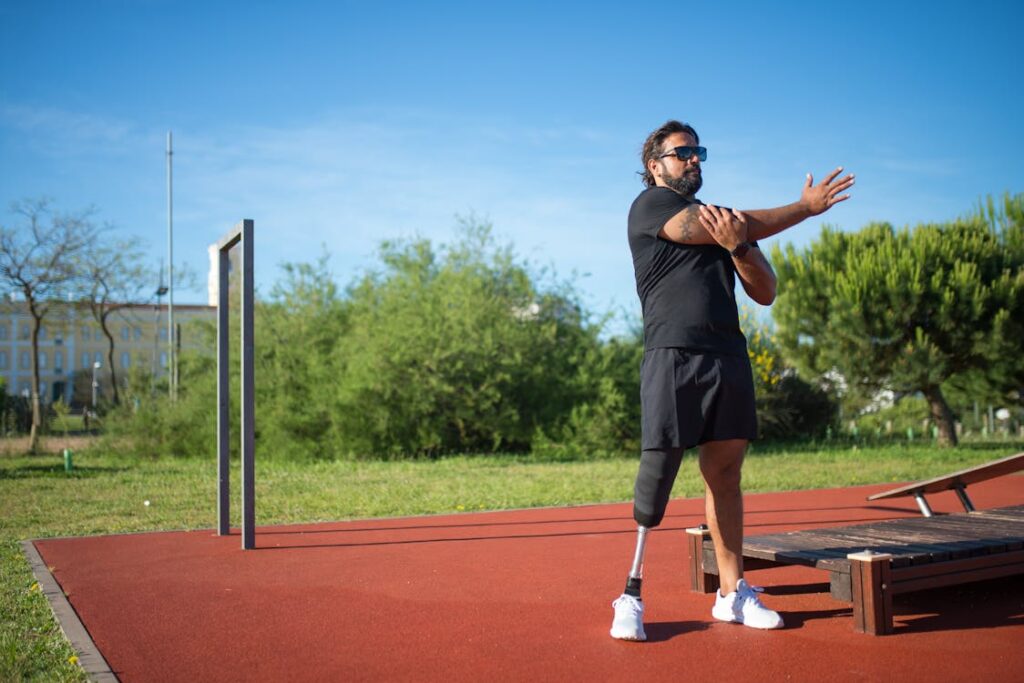
Cost, Maintenance, and Everyday Practicality
Understanding the Price Behind Each Foot
When choosing a prosthetic foot, cost matters—but it’s important to look beyond the price tag. What you pay upfront doesn’t always reflect the long-term value, especially when it comes to comfort, durability, and mobility.
Traditional prosthetic feet are usually more affordable. They’re simpler in design, use basic materials, and don’t require a lot of customization.
This makes them a good option for people on tight budgets or those who use their prosthetic less frequently. But over time, the physical toll of using more effort to walk, especially if you’re very active, may lead to other health-related costs, like back or hip therapy.
Dynamic response feet often come at a higher price. That’s because they’re built with specialized materials like carbon fiber and involve more complex engineering.
These feet are meant to last through active use and high-impact movements. While they may cost more up front, many users find they save money over time by reducing wear on their bodies and needing fewer adjustments or replacements.
It’s also worth considering what your insurance or support program covers. In some cases, a higher-performing foot may be partially or fully funded if it clearly supports your mobility and independence goals.
Day-to-Day Maintenance
Prosthetic feet don’t just sit on the shelf—they take a lot of wear and tear. Maintenance plays a key role in how long your foot lasts and how well it performs. The easier it is to care for, the more confident you’ll feel using it every day.
Traditional feet require very little maintenance. Because they have fewer moving parts, there’s less that can go wrong.
Many users like this “set it and forget it” feeling, especially if they don’t want to deal with frequent adjustments. But when they do wear down, they often have to be replaced entirely.
Dynamic response feet are a bit more complex. They may need occasional tuning or part replacement—especially the foot shell or heel components.
Some also need inspection to make sure the carbon fiber is still intact after long-term use or high-stress activity. This doesn’t mean they’re fragile, but they do benefit from regular check-ups with your prosthetist to keep them performing at their best.
Being proactive with care ensures your foot works with your body—not against it. Clean it regularly, report unusual sounds or stiffness, and always wear the right footwear to protect it.
Adapting to Real Life Situations
Mobility isn’t just about walking—it’s about doing life. That includes unpredictable moments like jumping over a puddle, carrying groceries, climbing a few steps, or standing in line for a while. Your foot has to be ready for it all, not just walking in straight lines.
With traditional feet, you may find these quick, flexible motions harder to manage. The stiffness limits how quickly you can react or recover balance.
Over time, this can affect your confidence and willingness to engage in social activities or take spontaneous outings.
Dynamic feet tend to perform better in these day-to-day moments. They allow you to shift weight, bend, or absorb impact more naturally.
That freedom can help you feel more in control, especially when navigating busy places like train stations, markets, or parks.
Your quality of life often depends on how freely you can respond to life around you. If your foot supports that freedom without holding you back, that’s a huge win.
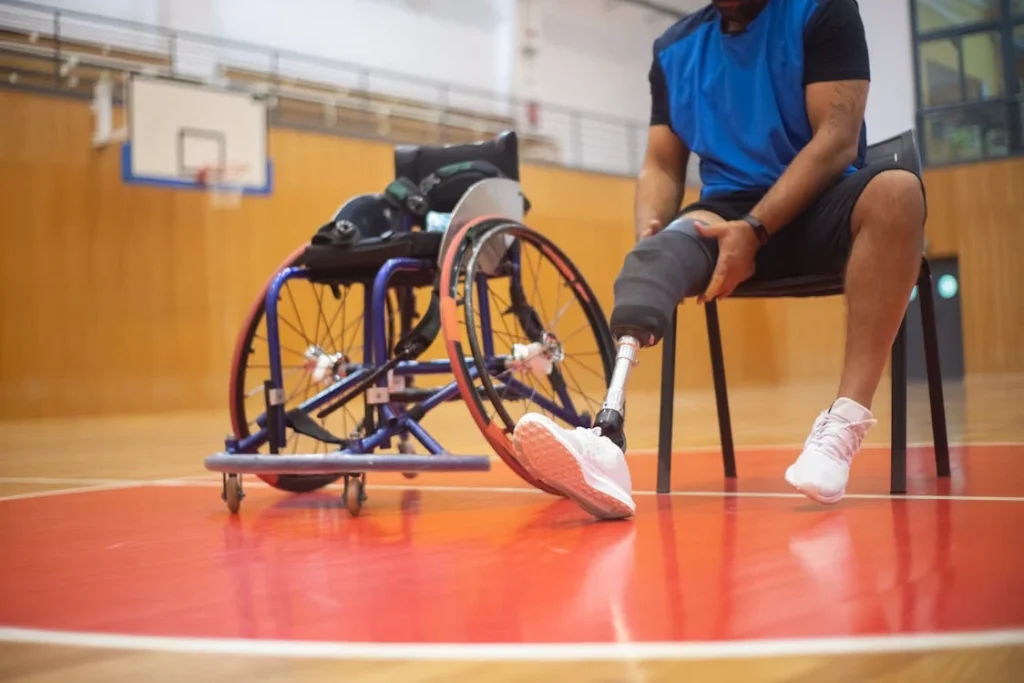
Emotional and Psychological Impact of Each Foot Type
Confidence in Movement
One of the most powerful—but often invisible—effects of a prosthetic foot is how it shapes your confidence. When your foot feels solid, responsive, and predictable, your whole approach to the world changes.
You stand taller, move faster, and say “yes” to more things. That’s not just physical progress—it’s emotional freedom.
With traditional feet, the lack of responsiveness can sometimes lead to hesitation. Users might be more cautious about where they walk or how far they go.
This doesn’t mean traditional feet aren’t useful—but it does mean they may not always inspire the same level of confidence, especially when it comes to sudden movement or uneven ground.
Dynamic response feet, because of how they move with your body, can give you that feeling of support and flow. You don’t have to overthink every step.
That sense of ease often leads to more spontaneous movement—and more willingness to rejoin activities you might have avoided before, whether that’s dancing at a wedding or just taking a longer walk through the neighborhood.
The Mental Load of Movement
Every step with a prosthetic requires some thought, especially in the beginning. But over time, users want to move without thinking about it constantly.
That’s when true freedom comes in. And that’s where the type of foot you choose can either lighten or increase the mental load.
Traditional feet may require you to be more aware of your environment at all times—watching for changes in slope, stepping carefully over small obstacles, or slowing down on turns.
This constant awareness can become mentally tiring. It may even lead to avoidance, where you turn down invitations or skip walks because it just feels like too much effort.
Dynamic response feet can reduce this mental fatigue. Because the foot works with you, adjusting to the ground and giving back energy, you don’t need to overthink every move.
You begin to trust your body more. That trust becomes confidence, and that confidence becomes momentum—in both a physical and emotional sense.
Rebuilding a Sense of Wholeness
Amputation can change the way someone sees themselves. There’s often a journey not just of physical healing, but of emotional recovery too.
The right prosthetic foot can play a powerful part in that healing. It’s not just about walking—it’s about how you walk and how you feel while walking.
Some users describe their first time using a dynamic foot as feeling like a part of themselves had returned. The spring, the bounce, the natural flow—it gave them back a piece of their identity.
For others, simply being able to walk longer without pain or effort was enough to feel a sense of independence they thought they had lost.
While traditional feet offer basic function and security, dynamic feet often bring something deeper—a sense of reclaiming movement, rhythm, and personality.
That emotional uplift shouldn’t be underestimated. Feeling whole again matters just as much as feeling balanced.
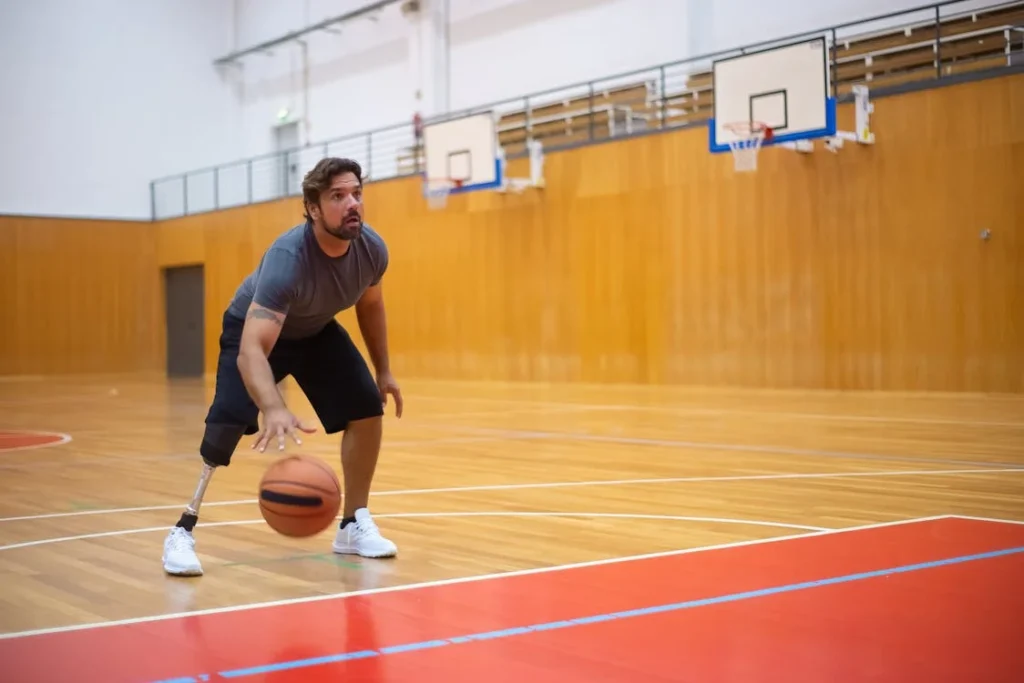
Matching the Foot to Your Lifestyle and Goals
Different Lives, Different Needs
Choosing between a traditional foot and a dynamic response foot isn’t just a technical decision—it’s a personal one. Everyone moves through the world differently.
Some people enjoy calm routines, while others thrive on movement and unpredictability. Your prosthetic should match the way you live, not just how you walk.
Someone who works from home, walks short distances, and spends most of their day indoors might not need a high-performance foot.
For them, the steady feel of a traditional prosthetic might be enough. It gets the job done, and if their routine doesn’t involve much physical strain, the lower energy return might not matter.
But for someone whose day includes long commutes, public transportation, busy streets, or even parenting young kids—mobility needs shift fast.
In those moments, the flexibility, responsiveness, and lighter feel of a dynamic foot may not just be helpful, but essential to keeping up with daily life.
The right foot isn’t just about where you are now—it’s about where you want to go next.
Planning for the Future, Not Just the Present
Another factor many people overlook is how their needs might change over time. Maybe today, your activity level is low—but what about six months from now? What if you start therapy, feel stronger, or take up a new hobby? Maybe you plan to travel more, return to work, or walk your daughter down the aisle.
Choosing a prosthetic foot isn’t only about solving a problem—it’s about building a future. A dynamic foot gives you room to grow.
It adapts to your body as you gain strength or confidence. You might not need its full potential on day one—but it will be there when you’re ready.
Traditional feet can also evolve with you, but the range of movement and performance tends to plateau. They’re reliable for consistency, not necessarily for adaptability.
That’s why they’re often chosen by users whose goals are steady and low-impact.
Your personal vision for your future—whether that’s increased independence, physical fitness, or simply walking pain-free—should shape your decision.
Personality and Comfort Preferences Matter Too
Beyond all the technical details, comfort is personal. Some people like the feeling of firmness and control that a traditional foot offers.
Others prefer the smoother, more flowing sensation that comes with a dynamic design. Neither is wrong—it’s about what feels right for you.
Some users find emotional comfort in simplicity. A traditional foot might feel familiar, safe, and easy to understand.
On the other hand, those who value progress, movement, and a sense of “getting back to normal” might feel more satisfied with a foot that actively supports and encourages that experience.
There’s no universal answer. Your foot becomes part of your identity. And that identity should reflect your choices, not just your condition.
Conclusion
Choosing between a dynamic response foot and a traditional prosthetic foot isn’t just about mechanics—it’s about how you want to live. Both offer value, but they serve different lifestyles, goals, and comfort needs.
Traditional feet provide stability and simplicity. They’re often enough for those with steady routines and low mobility demands. Dynamic response feet, on the other hand, offer more movement, more energy, and greater adaptability. They’re built for people who want to go further, faster, and with less strain on their body.
There’s no right or wrong choice—only what’s right for you. The best foot is the one that supports your life, matches your goals, and makes you feel strong, steady, and in control.
Whether you’re just beginning your journey or looking to upgrade, ask yourself: What kind of life do I want to lead? Then find the foot that helps you walk confidently into it.



